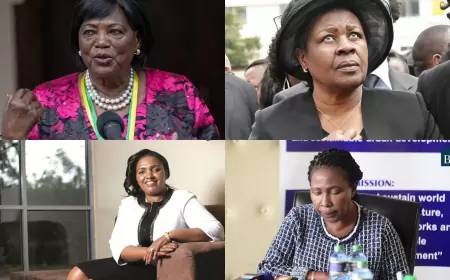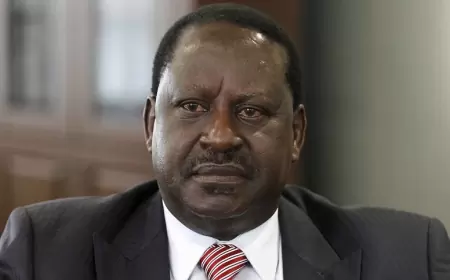BRICS Countries 2024: Full List Of All BRICS Countries In The World
Join us as we explore the expansion of BRICS membership and its impact on the international stage.

In the ever-changing landscape of international alliances and collaborations, the BRICS countries are again stepping into the limelight. The 15th BRICS High-Level Conference, which took off on August 22, 2023, in Johannesburg, South Africa, poised a defining moment in the group's history. This gathering promises to deepen the ties among the existing members and expand the horizons by considering the addition of new member countries. As the world watches this pivotal event unfold, let's delve into everything you need to know about BRICS – its origins, evolution, members, aspirations, and role in shaping the global order.
Key Takeaways from the Article
- BRICS is set to expand its membership from five to eleven countries, with Argentina, Egypt, Iran, Ethiopia, Saudi Arabia, and the UAE joining.
- The alliance was initially BRIC (Brazil, Russia, India, and China) before South Africa's inclusion in 2010.
- BRICS operates outside the framework of formal multilateral organizations and focuses on economic cooperation and trade.
- The expansion of BRICS membership reflects its growing appeal as an alternative platform for emerging economies.
- BRICS signifies unity, collaboration, and a shared vision for a more equitable global future.
Origins and Evolution
The BRICS acronym, which initially encompassed Brazil, Russia, India, and China, was coined in 2001 by Jim O'Neill, then the chief economist at Goldman Sachs. The term highlighted the remarkable growth potential of these four emerging economies. However, it wasn't until 2009 that this informal club solidified into a platform to challenge the dominance of Western powers in global affairs. Spearheaded by Russia, BRICS aimed to provide a united voice for the so-called "Global South."
Over time, the acronym evolved to include South Africa, thus becoming BRICS. In 2010, South Africa became the first new member, expanding the group's influence beyond its initial core. Since then, the BRICS nations have gathered annually, with each country taking a one-year rotating chairmanship. Despite not being a formal multilateral organization like the United Nations or World Bank, BRICS has exerted its presence globally through consensus-driven decision-making.
The Current Landscape: BRICS Membership and Beyond

The 15th BRICS summit, which took place in South Africa a couple of days ago, saw some new changes, among them being a fresh wave of members, demonstrating its commitment to embracing diverse economies. Argentina, Egypt, Iran, Ethiopia, Saudi Arabia, and the United Arab Emirates have received invitations to join, elevating the strength of BRICS from five to eleven member nations. This expansion reflects the bloc's intent to provide a platform for developing countries to shape global governance and challenge the existing order collectively.
Here is the updated list of BRICS nations showcasing their year of joining:
- Brazil - 2006
- Russia - 2006
- India - 2006
- China - 2006
- South Africa - 2010
- Argentina - 2023
- Egypt - 2023
- Iran - 2023
- Saudi Arabia - 2023
- Ethiopia - 2023
- United Arab Emirates - 2023
BRICS: A Force for Change
Beyond its expansion in terms of membership, BRICS has set its sights on transforming the global economic and geopolitical landscape. The bloc focuses on economic cooperation, multilateral trade, and development initiatives. BRICS operates within a consensus-driven framework, and all member countries also belong to the G20, a group of major economies. This dual membership empowers BRICS to channel its collective influence into regional and global platforms.
New Countries Who Want To Join The BRICS
Over 40 countries, including Iran, Saudi Arabia, the United Arab Emirates, Argentina, Algeria, Bolivia, Indonesia, Egypt, Ethiopia, and more, have expressed their interest in joining BRICS. These nations perceive BRICS as a viable alternative to traditional Western-dominated bodies, seeking to unlock benefits such as development finance, increased trade, and investment. This surge of interest comes in the wake of dissatisfaction among developing nations with the global order, especially highlighted during the COVID-19 pandemic when vaccine distribution disparities exposed the inequities of the existing system.
READ ALSO: What is the BRICS currency, Its Value, and Significance? What you need to know
Conclusion
BRICS, which originated as an acronym symbolizing the growth potential of a few emerging economies, has evolved into a dynamic force for change in the global order. Its expansion to include new member countries reflects its commitment to diversity and its goal of providing a platform for developing nations to be heard. With economic cooperation, multilateral trade, and geopolitical influence at the heart of its agenda, BRICS stands poised to shape the future trajectory of international relations.
FAQs
- What does BRICS stand for? BRICS stands for Brazil, Russia, India, China, and South Africa - a coalition of major emerging economies.
- When was the term 'BRIC' coined? The term 'BRIC' was coined in 2001 by then Goldman Sachs chief economist Jim O'Neill to highlight the growth potential of Brazil, Russia, India, and China.
- How has BRICS evolved over the years? Initially BRIC, the alliance became BRICS in 2010 upon South Africa's full membership acceptance. It has expanded its scope beyond economics to promote unity and cooperation among emerging economies.
- What is the significance of the 15th BRICS summit? The 15th BRICS summit is a pivotal event, as it marks the potential expansion of the alliance's membership and showcases its evolving role on the global stage.
- Why are new countries seeking to join BRICS? New countries, including Iran, Saudi Arabia, and Argentina, view BRICS as an alternative platform to voice their concerns and benefit from development finance and increased trade opportunities.
- How does BRICS operate? BRICS operates on the principle of consensus, with each member nation taking up a rotating chairmanship. It focuses on economic cooperation, trade, and challenging the existing global dynamics.












































































